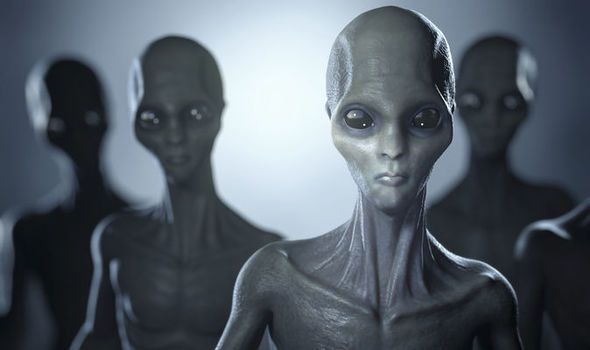It’s Very Likely That Advanced Life Has Evolved Elsewhere – But What Would They Look Like?
January 13, 2018 (dailygalaxy.com)
• “It is astonishingly likely that we are not the only time and place that an advance civilization has evolved,” says Adam Frank, professor of physics and astronomy at the University of Rochester.
• “By predicting that aliens have undergone major transitions – which is how complexity has arisen in species on earth, we can say that there is a level of predictability to evolution that would cause them to look like us,” said Sam Levin, a researcher in the University of Oxford’s Department of Zoology.
• While Hollywood films and science fiction literature fuel the belief that aliens are other-worldly, monster-like beings, very different to humans, new research suggests that we could have more in common with our extra-terrestrial neighbors, than initially thought.
• In a study published in the International Journal of Astrobiology, scientists from the University of Oxford show how evolutionary theory can be used to support alien predictions and better understand their behavior. Aliens might be shaped by the same evolutionary processes and mechanisms that shaped humans, such as natural selection, evolving to be fitter and stronger over time. We can say that there is a level of predictability to evolution that would cause them to look like us.
• There are potentially hundreds of thousands of habitable planets in our galaxy alone. If we’re not alone, we have taken a small step forward in answering what our neighbors might look like.
• [Editor’s Note] Researchers such as David Wilcock and Emery Smith have said that the humanoid “five pointed star” shaped form, with a head, torso, two arms, and two legs, is a template that is common to intelligent beings all across this crowded galaxy. Different dominant DNA dictate the type of form this template will take, whether human, reptilian, insectoid, feline, or an unlimited number of variations.
“From a fundamental perspective the question is ‘has it ever happened anywhere before?'” said Adam Frank, professor of physics and astronomy at the University of Rochester. “And it is astonishingly likely that we are not the only time and place that an advance civilization has evolved.”
If it’s astonishingly likely that life has evolved elsewhere, as Adam Frank proposes, what would they look like? “By predicting that aliens have undergone major transitions – which is how complexity has arisen in species on earth, we can say that there is a level of predictability to evolution that would cause them to look like us,” said Sam Levin, a researcher in the University of Oxford’s Department of Zoology.
Hollywood films and science fiction literature fuel the belief that aliens are other-worldly, monster-like beings, who are very different to humans. In the film Arrival, a linguist is charged with figuring out how to communicate with aliens who have landed on Earth. Visually, the aliens—called heptapods shown above—although not human, their subtle, otherworldly fluid movements and the dense atmosphere in which they breathe fits with our idea of biological possibility. As extraterrestrial life forms they seem truly feasible, even real, bearing a strong resemblance to Earth’s most alien intelligent life: cephalopods -squid and octopus.
In stark contrast, the Ridley Scott movie, Prometheus, opens with a human-like alien sacrificing itself after consuming a dark liquid, acting as a “gardener in space” to bring life to a world. In 2089, archaeologists Elizabeth Shaw and Charlie Holloway discover a star map in Scotland that matches others from several unconnected ancient cultures. They interpret this as an invitation from humanity’s forerunners, the “Engineers”. Peter Weyland, the elderly CEO of Weyland Corporation, funds an expedition, aboard the scientific vessel Prometheus, to follow the map to the distant moon LV-223, landing on the barren, mountainous surface near a large, artificial structure, which a team explores. Inside, they find stone cylinders, a monolithic statue of a humanoid head, and the decapitated corpse of a large alien, thought to be an Engineer; Shaw recovers its head. The crew finds other bodies, leading them to surmise the species is extinct.
New research suggests that we could have more in common with our extra-terrestrial neighbors, than initially thought. In a study published in the International Journal of Astrobiology scientists from the University of Oxford show for the first time how evolutionary theory can be used to support alien predictions and better understand their behavior. They show that aliens are potentially shaped by the same processes and mechanisms that shaped humans, such as natural selection.
The theory supports the argument that foreign life forms undergo natural selection, and are like us, evolving to be fitter and stronger over time.
Sam Levin, a researcher in Oxford’s Department of Zoology, said: ‘A fundamental task for astrobiologists (those who study life in the cosmos) is thinking about what extra-terrestrial life might be like. But making predictions about aliens is hard. We only have one example of life – life on Earth — to extrapolate from. Past approaches in the field of astrobiology have been largely mechanistic, taking what we see on Earth, and what we know about chemistry, geology, and physics to make predictions about aliens.
“In our paper, we offer an alternative approach, which is to use evolutionary theory to make predictions that are independent of Earth’s details. This is a useful approach, because theoretical predictions will apply to aliens that are silicon based, do not have DNA, and breathe nitrogen, for example.”
FAIR USE NOTICE: This page contains copyrighted material the use of which has not been specifically authorized by the copyright owner. ExoNews.org distributes this material for the purpose of news reporting, educational research, comment and criticism, constituting Fair Use under 17 U.S.C § 107. Please contact the Editor at ExoNews with any copyright issue.
